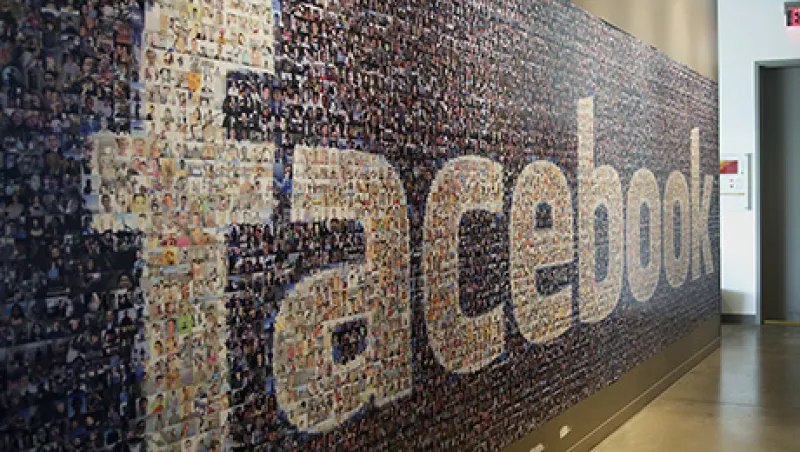The May 2012 Facebook initial public offering kicked CEO Mark Zuckerberg’s personal wealth up to $19 billion and was heralded as a major cultural milestone, not only in business and technology but also for American culture generally (even as its IPO was shadowed by poor performance). The opening price of $38 a share was less than many had predicted, and even that level dropped in the months following the IPO as commentators and investors asked one question: Yes, billions of likes and comments stream through the site each day — but how was the world’s largest social network going to pull in the amount of revenue necessary to bring down one of the highest multiples in the history of companies that size? Commentators pointed out that its advertising revenues were poor, certainly not enough to justify a $100 billion valuation. It was rumored that Zuckerberg himself was apparently reticent as to how the company might pull itself up into profitability.
There were unsurprising signs of trouble before the IPO: Chevrolet pulled a $10 million campaign from Facebook the day before the big event when the company refused to place larger, splashier ads on its site. Chevrolet questioned the efficacy of what seemed to be small, ineffective ads in newsfeeds — and from a certain perspective it might seem the company was right. Even given the ascendency of social media marketing, industry commentators often point out that Facebook ads rarely drive conversions directly, even when they win thousands or tens of thousands of likes for a company. Using Facebook to generate engagement and brand awareness is one thing; asking it to deliver customer receipts is another.
Recently, however, Facebook returned an unequivocal, strongly positive answer: The company’s revenue jumped 61 percent in the second quarter, to $2.91 billion, 62 percent of which came from mobile advertising. The company has generated an enormous amount of revenue selling a particular kind of mobile ad. It turns out Zuckerberg has been playing a long game, as usual (well before the IPO, he turned down impressive early offers from Yahoo and Google to buy Facebook). Instead of relying exclusively on more conventional techniques — sponsored posts, sidebars, paid promotion — the company has begun installing a “buy” button in certain ads in users’ newsfeeds. This approach combines advertising and e-commerce to allow users to buy products within Facebook, without having to open another app on their phones.
A move into e-commerce likely means that Facebook isn’t interested in the kind of advertising Chevrolet wanted; it marks a new phase in both e-commerce and social media marketing. Small businesses targeting a specific market segment — an artisanal clothing label attempting to sell directly to 13- to 15-year-old girls at elite California boarding schools, for example — stand to gain, as do developers and companies in the mobile space. Users can click on a Facebook mobile ad for an app — say, for transportation company Lyft — and begin to download it directly from Apple’s App Store. Briefly put, Facebook newsfeed ads deposit users directly into the mouths of the sales funnels of mobile-first companies.
The Lyft example is striking because it reflects an ongoing shift toward a mobile-first world, one in which shopping and other tasks that require relatively little computing power are performed on tablets and phones on the go. Lyft, like its primary competitor, Uber, is mobile-first; you can’t summon a car from anywhere but on your smartphone. Large brands, too, have been increasingly careful about their mobile presence and about streamlining their e-commerce so that every smartphone becomes a potential point of sale or at least helps drive foot traffic to brick and mortar stores. According to research by marketing firm Latitude, 40 percent of Americans will switch to a competitor if a brand’s app is difficult or inconvenient to use.
Social networks like Facebook offer advertising partners an overwhelming wealth of business intelligence; we tell each other everything about who we are and what we want. Those disclosures are the heart and engine of any network, online or off. What one might call social buying — selling embedded in social networks — is far more effective than conventional online retail and may soon comprise a significant portion of the e-commerce landscape. The mobile advertising model Facebook has established — which is both socially inflected and very close to a kind of bespoke direct selling — is more similar to visiting a mall with friends than to searching for a particular item on Amazon and browsing its reviews and ratings.
Sites like Facebook are uniquely built to help users share enthusiasm for products, purchases and deals with their networks, to help users discover new products and discuss them, as opposed to seeking out and purchasing the exact canoe or book or blender they already knew they wanted. It also seems likely that recent experiments with the affective content of users’ newsfeeds could be used to inform the construction of what one might call in-newsfeed retail experiences. Data about the effects that certain content has on user behavior could be employed to optimize purchasing, sharing and recommending products.
Less intriguing in terms of business intelligence but as exciting for the tech-minded is that Facebook may also be poised to develop its own online payments processor — perhaps through an acquisition of a midsize payments company — or partner with PayPal or Google Wallet. On the other hand, Facebook may take advantage of preexisting relationships with Apple — developed in 2012, when Facebook was first built into Apple’s mobile OS — to allow users to pay for goods on Facebook using their iTunes and App Store profiles. Whatever happens, for good or ill, the company is a leviathan, and its jump in ad revenues is massively promising for its shareholders. Beyond those with a stake in the company, this chapter in the Facebook story will have consequences for almost every consumer and businessperson on the planet.
Get more on technology.






